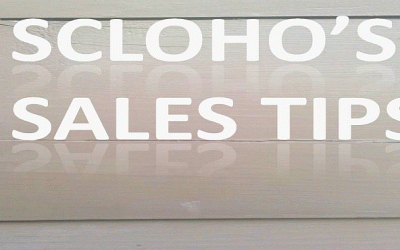More sales basics from RAB.com: Diagnose before you prescribe Sales consultant Nick Maslanka Think about the last purchase you made where you felt you had a positive experience with the salesperson. Did the salesperson introduce themselves and immediately tell...
ScLoHo Sales Tips
Negotiating Basics
For those new to the world of sales, a few negotiating basics from RAB.com: Ask For Something In Return Sometimes concessions are necessary in order to get a deal done. Granting a concession may even go a long way toward earning a prospect's trust. But even in a case...
Wondering Where 2014 Went?
I admit that like you, there were a lot of things I was planning on doing this year. It was 52 weeks ago that I returned to radio after spending most of the previous year earning my living in social media. Here's a suggestion we can apply now to see how we manage our...
Who’s Around Your Table?
On this Thanksgiving Day as many of us are surrounded by friends and family, I want to share a few thoughts about who you and I surround ourselves with at other times. From RAB.com: Surrounding yourself with success Sales trainer/consultant Colleen Francis You're...
17 Sales Tips in One
From RAB.com: The Best Practices of Top-Performing Salespeople Many people wonder what separates a top performing sales person from the rest of the pack. In most cases, it's because they apply a number of best practices in their daily routine. Here are 17 best...
Don’t Be Generic
So you want to be successful in sales and you've been told that you have to come up with creative ways to get to the decision maker. Since you are in the website sales business, you start looking online and to be different, you make your initial contact via the...
Listen More, Talk Less
When I'm doing my job as a radio advertising salesman, I do my very best to avoid the classic sales guy stereotype. You know the person who won't shut up and thinks that if they talk long enough that you'll buy whatever it is that you're selling... I want to have...
Negotiating Basics
Last weekend my wife and I went garage sale shopping in our neighborhood to see if we could find a couple of items. This Thursday Sales Tip is from a daily email I subscribe to from RAB.com and it's what we did to get what we wanted at the price we wanted to pay....
The Anatomy of a Sale
From the ScLoHo 2006 archives for #TBT #ThowBackThursday when I was managing a radio station sales staff: Here are a few items from a guide I wrote last week for my staff. There are a few items that are specific to the radio business, but smart people like you can...

